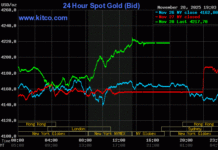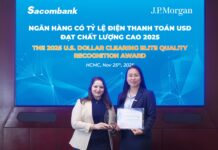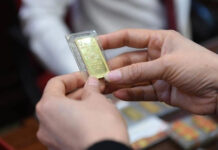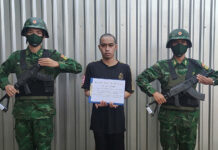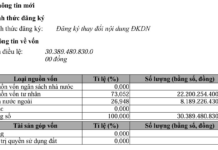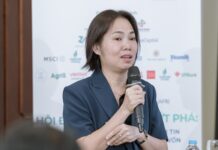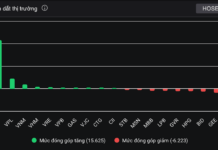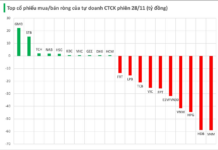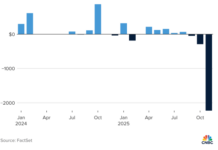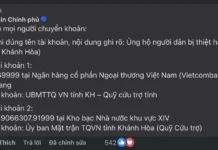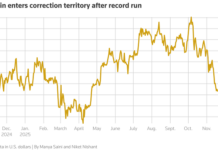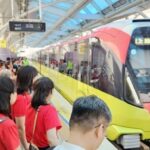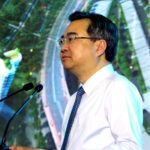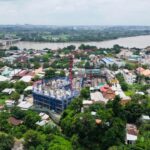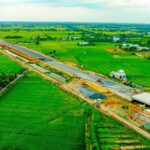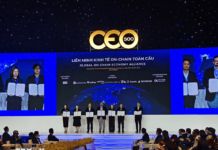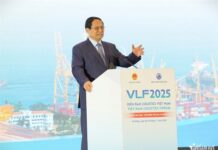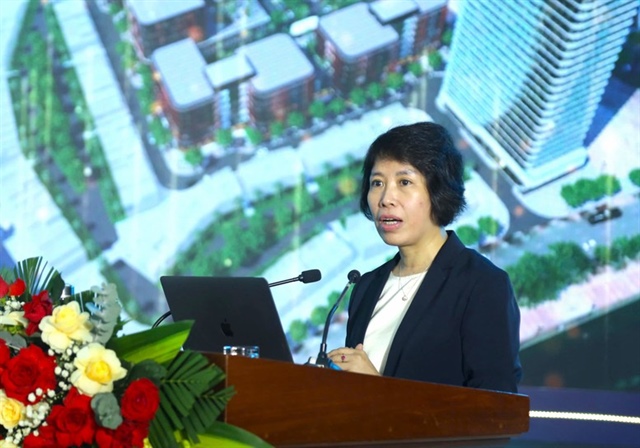
Deputy Minister of Finance Nguyen Thi Bich Ngoc speaking at the forum – Photo: VGP/MT |
Ho Chi Minh City as the Center of Liquidity, Leading Capital Sources
According to Deputy Minister of Finance Nguyen Thi Bich Ngoc, the National Assembly’s resolution has established a development model for the international financial center with a “one center – two destinations” approach, in which Ho Chi Minh City takes the lead as a large-scale hub, while Da Nang assumes a specialized role with a spirit of division to create synergy, avoid duplication, and prevent direct competition.
Following this orientation, Ho Chi Minh City will focus on attracting diverse capital sources, such as stocks, bonds, investment banking, and asset management; meanwhile, Da Nang will develop niche markets based on its advantages in seaports, international airports, the East-West Economic Corridor, and coastal industries.
This positioning allows Vietnam to operate a multi-location financial center, with Ho Chi Minh City as the “liquidity leader” and Da Nang as the flexible “extended arm,” closely linked to commerce and industry.
As Deputy Minister Nguyen Thi Bich Ngoc emphasized, a sustainable financial ecosystem relies on tangible goods, services, and values. Therefore, the Da Nang Financial Center must go hand in hand with the free trade area, applying special mechanisms with priorities such as expedited customs procedures, green logistics, bonded warehouses, and exceptional risk control frameworks. When goods flow transparently, financial services such as trade finance, marine insurance, and exchange rate – interest rate risk prevention will form naturally.
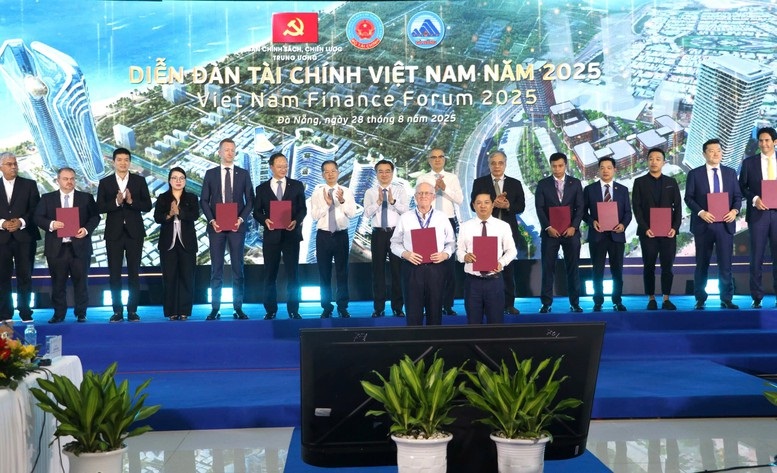 Da Nang and its domestic and foreign partners signing cooperation agreements at the forum – Photo: VGP/MT
|
To create a unique value proposition compared to Ho Chi Minh City, Da Nang needs to establish a financial product portfolio revolving around four pillars: Finance – Logistics – Marine Insurance, including trade finance services, credit, ship and cargo insurance, regional reinsurance, and supply chain disruption risk prevention; commodity derivatives linked to Central – Highlands agriculture, aquatic products, metals, and minerals, serving production chains and compensatory payments; Green Finance with green bonds, carbon credits, agricultural and aquatic insurance against climate risks adhering to ESG standards, turning climate challenges into long-term capital; and cross-border financial services for the East-West Corridor with electronic identification, green waybills, international payments, and risk monitoring according to global standards.
These four pillars will create a flow that interconnects goods, data, capital, and insurance, forming a closed-loop value chain for the financial center, positioning Da Nang within the dynamic cluster of Central – North Central Vietnam, from Thanh Hoa to Quang Ngai, where the market scale for financial services is substantial due to infrastructure advantages in ports, airports, roads, and interconnected economic corridors.
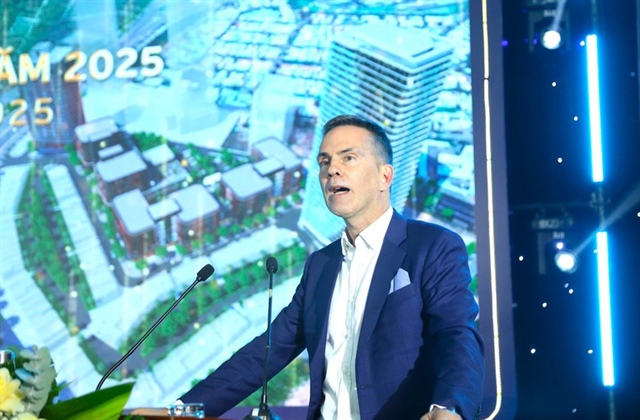
Dr. Jochen Biedermann, Executive Director of the Alliance of International Financial Centers – Photo: VGP/MT |
Harnessing Internal Strength and Enhancing International Cooperation to Build Vietnam’s International Financial Center
Dr. Jochen Biedermann, Executive Director of the Alliance of International Financial Centers, suggested that alongside centralized coordination and a cooperative approach between Da Nang and Ho Chi Minh City, it is essential to maintain healthy competition between the two cities. Vietnam, with its young and dynamic population, has the potential to develop multiple financial centers simultaneously. International experiences from countries like China, the USA, the UAE, Japan, and Australia demonstrate the successful establishment of specialized financial centers, where medium-sized and small cities often bring innovative ideas, reasonable costs, and flexible working environments.
According to Mr. Biedermann, Vietnam requires capital to finance its growth, but developing internal strength is the decisive factor in building a sustainable financial ecosystem. The Chinese experience shows that while initial foreign capital flowed through Hong Kong, the most significant driver of their financial system came from domestic institutions like Tencent, Ant, and the domestic banking system—forces that promoted inclusive finance even in rural areas.
For Vietnam, the popularization of digital financial services, from money transfers and savings to lending and investing, will be a driving force for the economy while also opening opportunities for domestic digital financial enterprises to expand internationally, following the trend of many Asian countries.
He also emphasized the importance of international connectivity. While Ho Chi Minh City has excelled in this regard, Da Nang needs further improvement to meet global standards, as it currently only connects regionally. The government’s acceleration of the North-South high-speed rail project is expected to provide a strategic advantage for the southern economic centers.
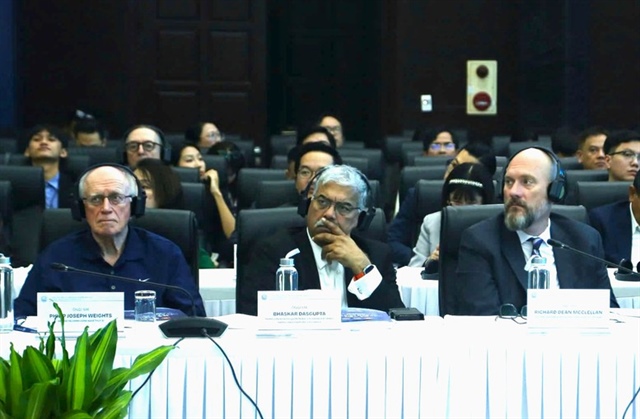 International experts at the forum – Photo: VGP/MT |
From another perspective, Mr. Damian Hickey, Southeast Asia Director of the Tony Blair Institute for Global Change, suggested that to maximize efficiency, Vietnam’s international financial center management needs to identify strategic partners, engage the private sector, ensure inter-sectoral coordination, and convey a consistent message to the international community.
By doing so, Vietnam will not only establish a competitive financial center but also position the international financial center as a trusted gateway for cross-border capital, innovation, and sustainable growth.
Minh Trang
– 18:28 28/08/2025
“The Role of International Financial Centers in Ho Chi Minh City and Da Nang: A Strategic Perspective.”
“Vietnam’s Deputy Minister of Finance, Mrs. Nguyen Thi Bich Ngoc, sheds light on the National Assembly’s Resolution for a two-hub Financial Center. Ho Chi Minh City takes the lead as the primary hub, while Danang assumes a specialized role. This strategic move emphasizes unique contributions and synergy, steering clear of replication.”
Ho Chi Minh City Encourages Family Growth: A Generous Offer for Mothers
Let me know if you would like me to tweak it or provide additional suggestions.
“Having two children before the age of 35 can be a rewarding experience for women, and now there’s an added incentive. The city is offering a generous support package of 5 million VND, a 2 million increase from previous policies. This financial boost can make a significant difference for young families and is a welcome recognition of the importance of starting a family at a younger age.”
The Next Property Hotspot: Unveiling the Billion-Dollar Infrastructure Revolution
The development of a multi-billion-dollar infrastructure project has transformed travel connections between Bien Hoa (Dong Nai) and Ho Chi Minh City, sparking new dynamics in the region’s real estate market.






